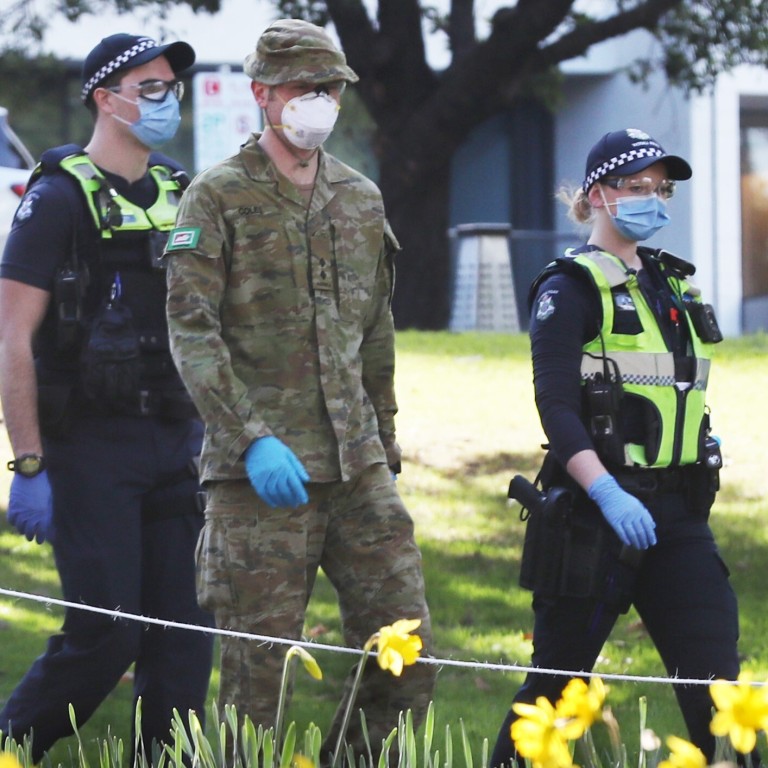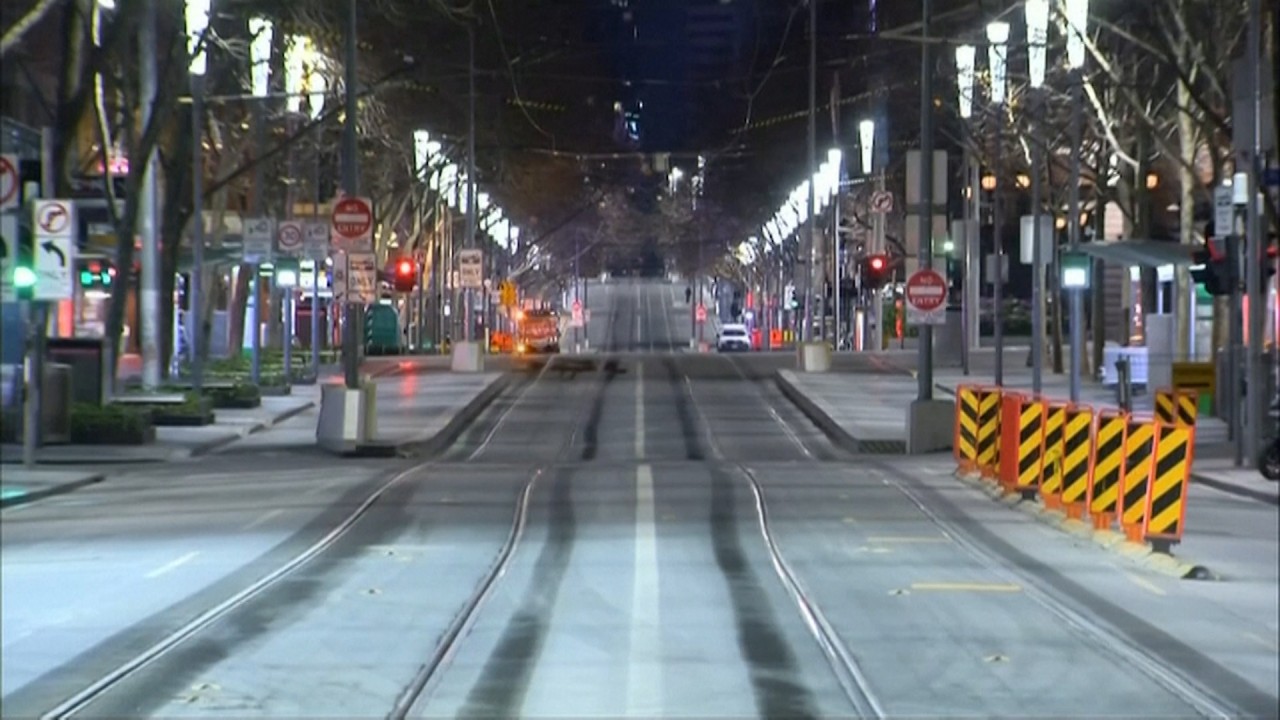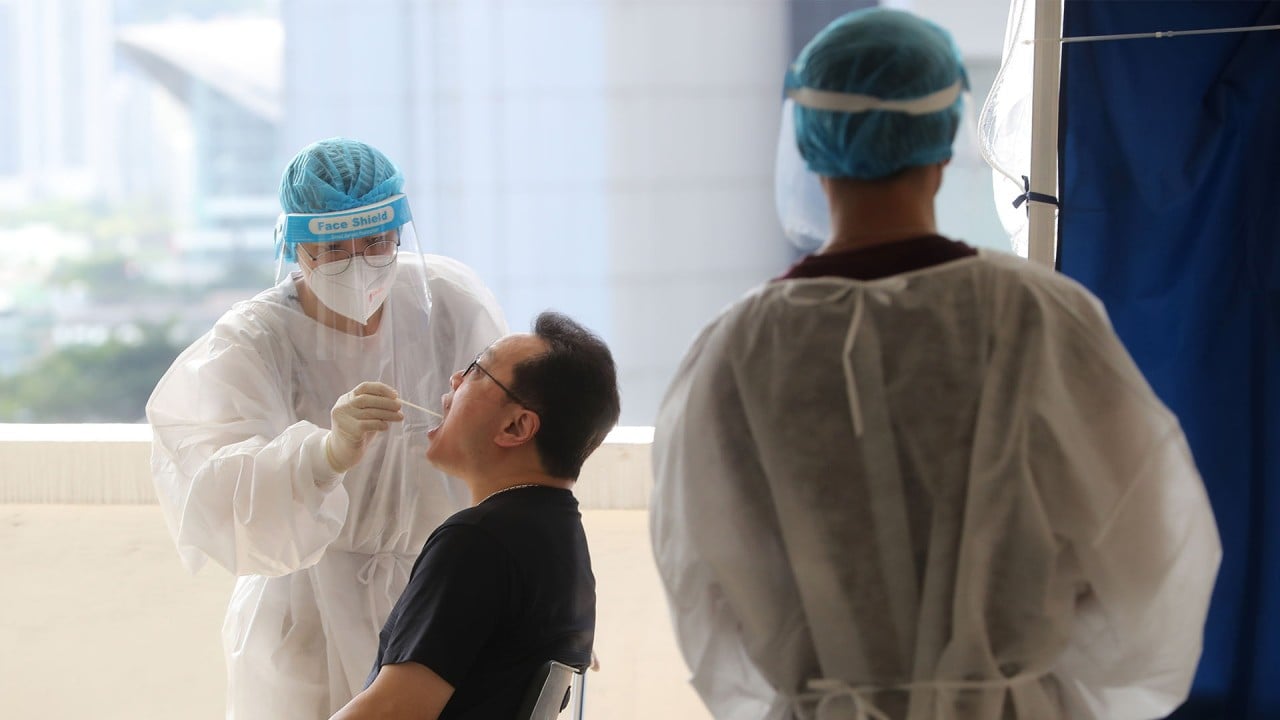
State of disaster and curfew declared in Australia’s coronavirus-hit Victoria
- Sweeping new restrictions begin on Sunday night across Melbourne and elsewhere
- India reported nearly 55,000 new cases as its Home Minister Amit Shah was hospitalised for Covid-19, and Japan recorded over 1,500 for a second day
Declaring a “state of disaster”, Victoria Premier Daniel Andrews said Melbourne would move to Stage 4 restrictions until September 13 given “unacceptably high” levels of community transmission.

01:12
Melbourne enacts citywide curfew as Australia continues to battle spike in coronavirus cases
The harshest rules in Australia to date will see city residents face a curfew from 8pm to 5am for the next six weeks. Only those carrying out essential work, or seeking or providing care, will be allowed out.
“The time for leniency, the time for warnings and cautions is over,” Andrews said. “If you are not at home and you should be, if you have the virus and are just going about your business, you will be dealt with harshly. Lives are at stake.”
Melbourne residents will be limited to an hour of exercise a day, no further than 5km (3 miles) from home starting Sunday night.
Only one person per household will be able to shop for essential items each day, also within the same strict radius.
Most school and university students in Melbourne will go back to online learning from midnight on Wednesday, just weeks after returning to their classrooms, while weddings will also be banned.
The sweeping new measures follow a citywide lockdown that began in early July but has failed to curb the spread of the virus, with Andrews blaming the continuing rise in cases on people flouting stay-at-home orders.
“These are the decisions made because anything short of this will not keep us safe,” Andrews said, adding anything less “will see it drag on for months and months and months”.
Australia’s embrace of face masks uncovers entrepreneurial spirit
Additional restrictions affecting workplaces would be announced on Monday, Andrews added, suggesting that non-essential businesses will face closures.
Victoria’s chief health officer, Brett Sutton, said stricter lockdowns like those enforced in New Zealand were being considered. Under the New Zealand model, all businesses would shut down except for essential services.
Outside Melbourne, the rest of Victoria will move to a Stage 3 lockdown from midnight on Wednesday with people allowed to leave home only for essential work, study, care and needed supplies.

Victoria accounts for the vast majority of active coronavirus cases in Australia, recording 671 new cases and seven deaths from the virus on Sunday.
Elsewhere in Australia, other states and territories have for weeks reported few or no new cases while relaxing restrictions.
Australia’s Covid-19 death toll has risen to 201. On Sunday, New South Wales confirmed its first coronavirus-related death in more than a month as authorities sought to suppress a number of growing clusters at a hotel and several restaurants in Sydney.
Australian researchers invent 20-minute coronavirus blood test in world first
Six months after the World Health Organisation declared a global emergency, the novel coronavirus has killed more than 680,000 people and infected more than 17.5 million.
In other developments in the Asia-Pacific region India reported nearly 55,000 new coronavirus cases on Sunday and Japan recorded more than 1,500 for a second day. China and South Korea reported more infections but spikes in both countries appeared to be tailing off.
Mainland China had 49 new confirmed cases, up from the previous day’s 45. Thirty were in Xinjiang in the northwest, where authorities are trying to contain an outbreak focused on the regional capital, Urumqi.

05:38
What started Hong Kong's third Covid-19 wave?
Coronavirus infections in the Philippines surged past 100,000 on Sunday after medical groups declared that the country was waging “a losing battle” against the virus and asked the president to reimpose a lockdown in the capital.
The country reported a record-high daily tally of 5,032, bringing the total confirmed cases in the country to 103,185, including more than 2,000 deaths. The Philippines has the second-most cases in Southeast Asia after Indonesia.
President Rodrigo Duterte eased a tough virus lockdown in the capital, Manila, on June 1. After shopping malls and workplaces were partially reopened and limited public transport was allowed, infections spiked sharply with increased virus testing. More than 50,000 infections were reported in less than four weeks.
Philippines doctors cry out for fresh lockdown as virus cases surge
Confirmed coronavirus cases are hovering at near record levels in Japan, raising worries the pandemic may be growing more difficult to control.
The Tokyo government reported 292 new cases on Sunday, about half in their 20s. Japan in total reported 1,540 cases on Saturday – the second straight day the number was above 1,500.
The spike in Japanese cases, most of them in their 20s and 30s, prompted warnings young people were letting their guard down. The governor of Tokyo, which has about one-third of the new infections, said she might declare an emergency to contain the outbreak.

India’s coronavirus caseload crossed 1.75 million with another spike of 54,735 in the past 24 hours.
The new cases are down from 57,118 on Saturday. The Health Ministry on Sunday also reported 853 deaths for a total of 37,364.
Randeep Guleria, a top government expert, said that New Delhi and Mumbai may have crossed their peak levels with declining trends. The month of July alone accounted for more than 1.1 million cases in India.
Health Minister Harsh Vardhan said the case fatality rate was progressively reducing and currently stands at 2.18 per cent, one of the lowest globally. Out of the total active cases, only 0.28 per cent are on ventilators, 1.61 per cent need intensive care support and 2.32 per cent oxygen support.
On Sunday, Indian Home Minister Amit Shah said he had tested positive for the coronavirus and is getting admitted to a hospital on the advice of doctors. Shah, 55, tweeted that he was in good health and requested those who had come in his contact to isolate themselves and get tested.
Shah is No. 2 in Prime Minister Narendra Modi’s government. He has been visiting hospitals and holding meetings with top officials as part of the government’s massive efforts to curb the spread of Covid-19 infections in the country.
Coronavirus: South Korea arrests leader of Shincheonji church
South Korea reported 30 additional cases on Sunday, most of them associated with international arrivals. This brings the national tally to 14,366 with 301 deaths.
South Korea has recently seen an uptick in imported cases, many of them South Korean construction workers airlifted out of virus-ravaged Iraq and crew members of Russia-flagged cargo ships docked in local ports. Health authorities have said imported cases are less threatening as they continue to enforce two-week quarantines on all people arriving from abroad.
